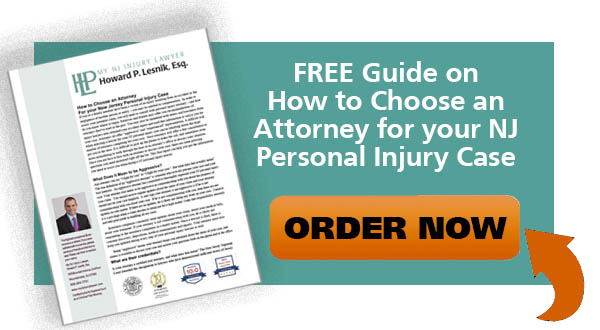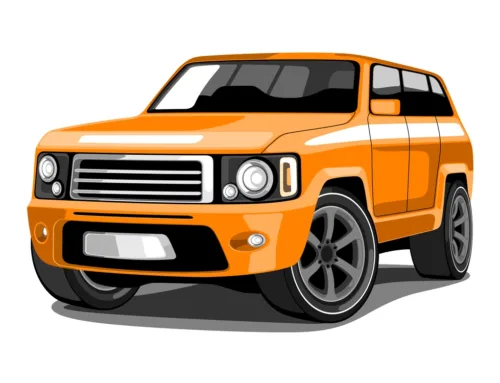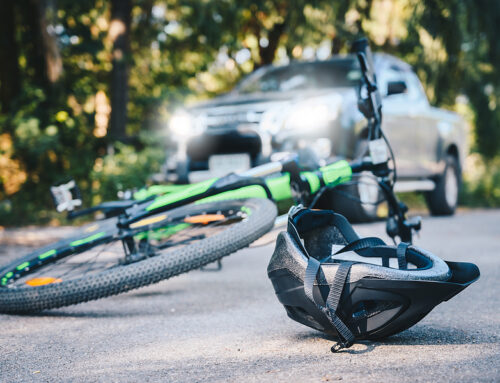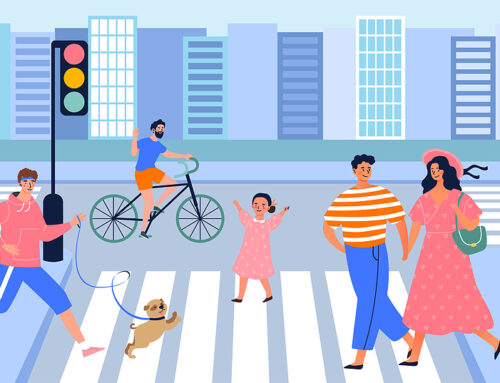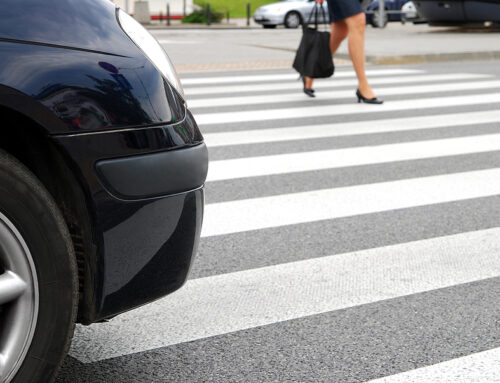I recently returned from a family vacation in Europe where busy streets were over-crowded with tourists and pedestrians and miniature smart cars and Vespas zoomed in and out of crowded intersections and streets. Tourists raced around the streets with maps and luggage and seemed oblivious to traffic. Most locals seemed to accept the fact that pedestrians owned the streets and opted to drive around on Vespas in order to weave through crowded streets.
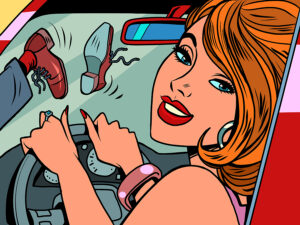 Here, pedestrians of course have the right of way, but it is more common to only use crosswalks and sidewalks and not walk throughout the streets. While automotive accident fatalities overall have been declining over the past few years, one kind of traffic-related death is dramatically bucking that trend. The rate of pedestrian deaths in motor vehicle accidents has been steadily increasing in the past 10 years, to an estimated high in 2018 that hasn’t been equaled since 1990. These projections have been compiled in a report by the Governors Highway Safety Association, a nonprofit group that represents and draws data from highway safety offices nationwide. Using reported pedestrian death statistics from the first six months of 2018 and coupling those figures with historical trends in fatal accident data, the Association has produced an estimate that 6,227 pedestrian fatalities occurred as a result of automotive accidents in the whole of 2018. This figure, the largest number of pedestrian deaths in almost 30 years, represents a 35 percent increase in pedestrian fatalities over the course of a single decade. Coming at a time when other motor vehicle accident fatalities have been declining, this trend of increasing pedestrian deaths is a dangerous aberration that demands explanation.
Here, pedestrians of course have the right of way, but it is more common to only use crosswalks and sidewalks and not walk throughout the streets. While automotive accident fatalities overall have been declining over the past few years, one kind of traffic-related death is dramatically bucking that trend. The rate of pedestrian deaths in motor vehicle accidents has been steadily increasing in the past 10 years, to an estimated high in 2018 that hasn’t been equaled since 1990. These projections have been compiled in a report by the Governors Highway Safety Association, a nonprofit group that represents and draws data from highway safety offices nationwide. Using reported pedestrian death statistics from the first six months of 2018 and coupling those figures with historical trends in fatal accident data, the Association has produced an estimate that 6,227 pedestrian fatalities occurred as a result of automotive accidents in the whole of 2018. This figure, the largest number of pedestrian deaths in almost 30 years, represents a 35 percent increase in pedestrian fatalities over the course of a single decade. Coming at a time when other motor vehicle accident fatalities have been declining, this trend of increasing pedestrian deaths is a dangerous aberration that demands explanation.
Road safety researchers do have a number of hypotheses to explain the increasing danger to pedestrians disproportionate to other road users. The first possibility is that there are simply more people out walking. Whether out of practical necessity, a desire to make healthier choices, an effort to be environmentally responsible, or a wish to avoid unpredictable gas prices, more people are out on the sidewalks and roads as pedestrians, suggest researchers. Even if the level of danger for a pedestrian on our nation’s roads had not objectively changed, a greater number of pedestrians would logically result in more pedestrian accidents (and therefore, more pedestrian fatalities).
Of course, traffic researchers do not suggest that the dangers to pedestrians have remained static for the past 30 years. While public awareness campaigns have helped in some measure to curtail the dangers of drunk driving, the widespread use of smartphones has helped to encourage a similarly dangerous behavior: distracted driving. In the past few years, specific smartphone apps (such Waze, Texting, Maps and Snapchat) have come under fire for the temptation they provide motorists to pick up their phones while behind the wheel, but phone calls and text messaging are just as strong distractions as social media and phone games. Of course, there are countless other forms of driver distraction beyond those caused by mobile devices, but smartphones are common culprits, which is why legislation regarding the use of mobile devices by motorists is so common. Rarely does smartphone legislation extend to pedestrians, however, and “distracted walking” has also received its share of criticism for putting pedestrians in danger.
The types of cars on the road may also play a role in the increase in pedestrian fatalities, according to some researchers. We are continuing to see more and more SUVs on our nation’s roads, and the greater size, mass, and height of these vehicles relative to passenger sedans tend to cause more severe injuries when an SUV strikes a pedestrian.
The most likely case is that all of these factors, and possibly others, play a role in making the nation’s roads such a dangerous place for pedestrians. Studying the available data more closely, researchers are able to see how certain factors may impact fatality rates. For instance, data from the past 10 years shows that, of the 35 percent increase in pedestrian deaths in that span of time, the vast majority of collisions that contributed to that increase happened at night, when visibility was compromised by darkness and one or more of the parties involved in the accident was likely to be drowsy, intoxicated, or otherwise less than alert. In 2017 alone, half of all pedestrian deaths occurred in accidents wherein either the pedestrian or the motorist was under the influence of alcohol. This kind of data gives us important clues about the factors that may be contributing to this upswing in pedestrian fatalities, but the full picture may be more complicated.
The increase in pedestrian fatal accident statistics stands out so starkly in part because it is taking place against the backdrop of an overall downward trend in automotive accident fatalities. But should the latter trend be interpreted to mean that our roads are getting safer overall, and that the climbing rate of pedestrian deaths is an outlier? Instead, perhaps the new and improved safety features that auto manufacturers continue to develop every year are having their intended effect of saving the lives of the vehicle’s occupants in the event of an accident. Pedestrians, lacking the protection of these safety features, remain as vulnerable to injury and death as ever, and rely on changes to the behavior of all road users that reduce accident rates, rather than technological innovations that reduce the severity of injuries, to keep them safe.
Contact MyNJInjuryLawyer Howard P. Lesnik
If you or a loved one suffered an injury in an accident in NJ, you should contact an attorney familiar with handling these claims. An experienced NJ Injury Lawyer will know how to obtain medical records, videos, photographs, experts, locate witnesses and contact the insurance company so you can make a claim for your injuries.
My NJ Injury Lawyer Howard P. Lesnik, Esq. offers complimentary strategy sessions to address any issue or questions you may have for your injury claim in NJ.
Please contact NJ Injury Lawyer Howard Lesnik, Esq., immediately if you were involved in an accident. I personally handle NJ personal injury cases on a regular basis. Please contact me now by email, by phoning 908.264.7701, or by completing the form to the right to schedule your complimentary 30-minute strategy session. Call me direct and I will answer 5 questions that you have about your potential claim.


